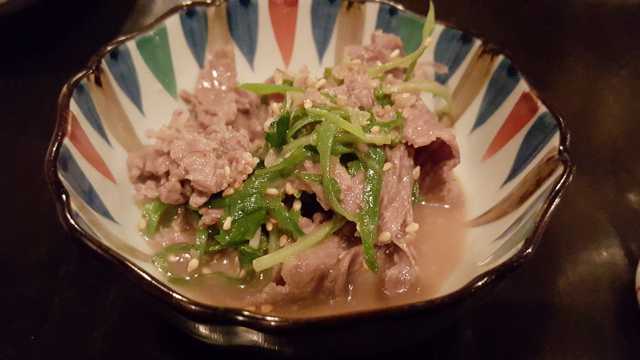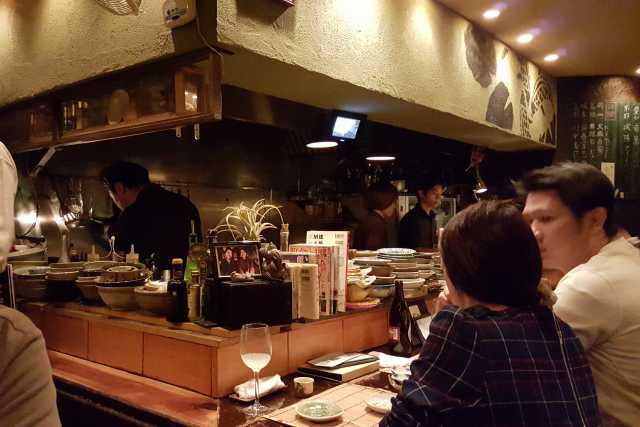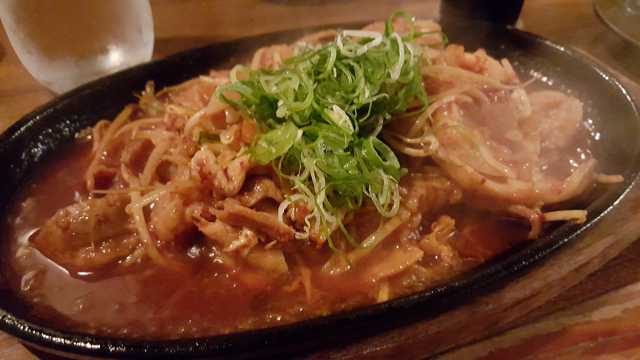It all sounds wonderful.
Look forward to seeing you tomorrow!
We just had some tasty skewered gizzards and hearts at Nara Station and are headed back to Kyoto.
It all sounds wonderful.
Look forward to seeing you tomorrow!
We just had some tasty skewered gizzards and hearts at Nara Station and are headed back to Kyoto.
Beef in the Red Light District
Hokkaido not only has great seafood, it’s also a source for excellent beef. Like Doug mentions above, there are a ton of small yakiniku restaurants, grilling beef and other meats at the table. Very similar to Korean, but the Japanese version doesn’t marinate the meat, and the sauces are different. One of the best of them is Ishizaki in Sapporo, located on the 5th floor of a totally non-descript cinderblock building. It’s funny to me, these blocks and blocks of stacked bars and restaurants in Japanese cities (probably other places in Asia, too), where you’d never think to find anything but grey and colorless offices. Each floor might have 4-6 tiny isakayas or bars or even fine dining establishments. I wish I knew how to crack the code of bar hopping within these warrens. But back to the beef….At Ishizaki, they serve only Eze Tajima Ushi beef, which is Matsuzaka stock raised in Hokkaido. I’m a big fan of Matsuzaka – I like it even more than Kobe – and the quality of this version was excellent. It was not stupid crazy marbled, probably around an A5, and to me, that’s perfect. The really highly marbled versions are so rich, I can only tolerate a bite or two, and I don’t really like the texture as much as those I need to chew a bit.
We had a tiny private room, with the traditional grill in the center, and a parade of very sweet and friendly wait staff coming in and out with a procession of dishes and sauces. The menu was a little overwhelming, and hilarious in its awkward English spelling/translations. I particularly liked the map of the cow beside each cut of beef, showing where it comes from. We ended up ordering one of the set menus, as we wanted to try many different cuts, and choosing on our own was too much work. Our menu came with 6 different cuts of beef, including tongue, as well as a salad, beef sashimi and beef sushi. Everything was delicious. I lost track of which cut was my favorite – it was all labeled, but it was labeled in Japanese, and neither of can read!
There was even a pretty solid, if short wine list, with options from Mouton and Mongeard-Mugneret, through Dom Perignon and Gosset, as well as plenty of less expensive options. We had a 2009 Moulin au Vent which was perfectly serviceable, and which they served in nice burgundy stems.
We left feeling very satisfied, but not stuffed, and more than able to visit a few bars in Susikino before heading home. ![]() For those of you who have been to Totoraku in LA (which I love), Ishizaki was head and shoulders above. Highly recommended and a nice break from all the seafood.
For those of you who have been to Totoraku in LA (which I love), Ishizaki was head and shoulders above. Highly recommended and a nice break from all the seafood.
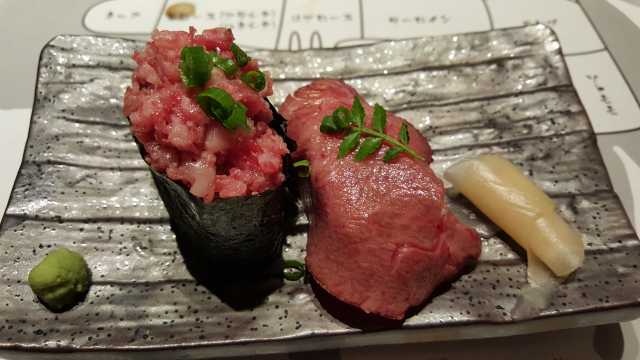
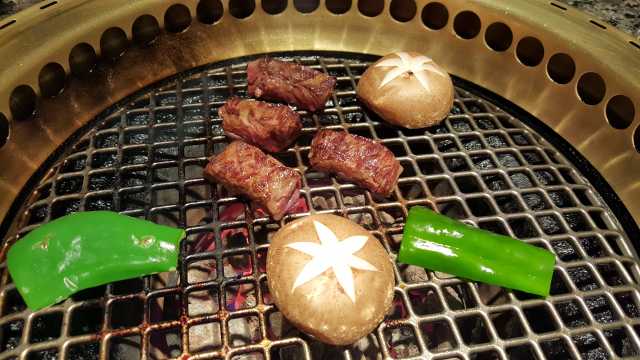
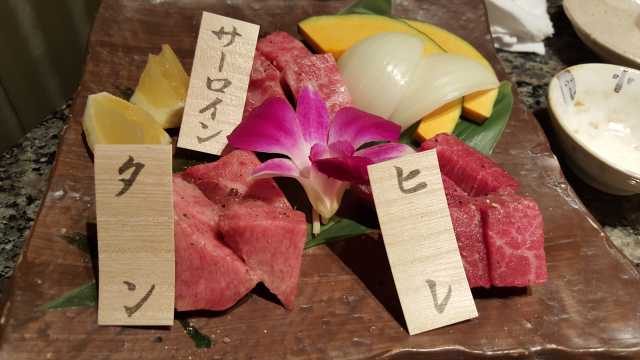
There’s a typhoon? Hooray!
My husband and I are normally not nervous travelers, and we tend to cut time in the airport to a bare minimum, counting on status and pre check to get us through the lines quickly. But having been to the Sapporo airport before, we knew we’d want at least an extra hour to play. As it turned out, a typhoon blew in, and everything was delayed, and then rushed – a function of the Japanese need to avoid discomfort and embarrassment at all cost, plus their need to have everything run on time (another story), and we ended up having both time on our hands, and stress. But I digress….
New Chitose Airport (CTS) has the largest selection of gourmet Japanese food stores that I have seen anywhere outside of the basement of a department store. You can find everything from multiple varieties of local Hokkaido butter and raw milk, to row upon row of packaged fish, to live crabs, ready for steaming and packing. There are salmon rolls, and salmon jerky, and salmon sausage and salmon butter. There is a large and well stocked wine/sake store, right next to a shop selling high quality cheeses and pâtés. You can buy frozen snow crabs to take home with you, complete with insulated packaging and adorable little ice packs. There are bushels of fresh corn and stacks of melons. It’s a paradise for foodies. In addition to the shops, there is a whole floor of good restaurants, including a “Ramen Alley” similar to the one in Tokyo Station, with outposts of some of the best ramen shops in Hokkaido. We knew there would be another ramen indiscretion before our flight, and we had designs on finding a totally different style than the corn/miso/butter we’d had the other day - a shrimp-based broth, at a well-known place called Ebisoba Ichigen. It is considered one of the best in Sapporo, with a store at the airport and in Susikino. We chose the thick version of the mixed shrimp and pork broth, with the thick noodles, and miso seasoning. Though the sliced pork on the ramen was only average, the broth, noodles and other toppings were excellent. I didn’t get a picture – I was too hungry, and the typhoon made the already busy Ramen Alley an over-crowded nightmare.
I have dozens of pictures of this amazing and totally weird airport mall and wish I could post them all to convey just a little of the plethora and profusion of food of all shapes and sizes.
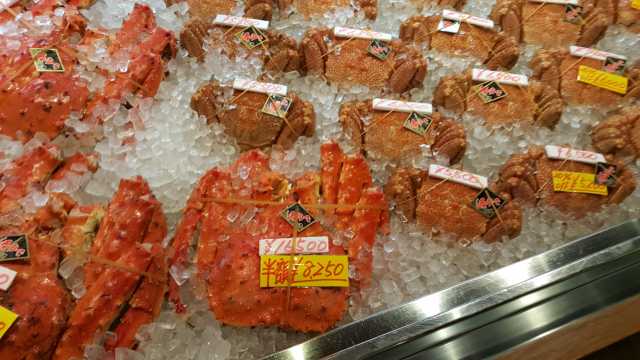
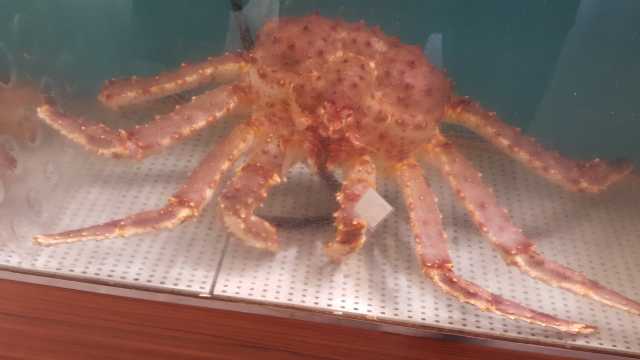
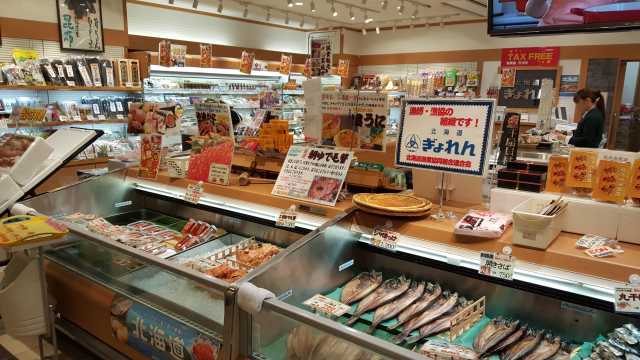
Kappo in Kyoto
Kyoto is probably my favorite city in the world, and coming back always feels a little like coming home. I’ve never stayed in a hotel in Kyoto, as the thought of being here without a kitchen is too sad to contemplate. The ingredients you can get at Nishiki Market and other specialty stores make the heart of anyone who likes to cook Japanese food beat a little faster, and that’s even knowing that Kyoto doesn’t offer the same access to great fish that other cities near the water, with huge fish markets do. Don’t get me wrong – the restaurants get very good quality, but they get it from Tokyo or Osaka or the like. We did that once, went to the wholesale fish market in Osaka early one morning and brought a gorgeous piece of tuna back to our kitchen in Kyoto, and we’ll likely do it again one of these days. For this visit, we were perfectly content to stock our little fridge with fresh tofu, yuba, vegetables, mushrooms, eggs, yuzu, sudachi and the highest quality of ingredients for making dashi. And oh my lord, the miso….!
A word or two about the tofu in Kyoto – it is incredible. Kyoto is the center of the universe for tofu. For those of you who think of tofu as some tasteless, mushy paste eaten only by vegetarians or as penance, or to get a girl/guy who eats tofu into bed, the various kinds of tofu made in Kyoto will change your mind. Okay, I can’t guarantee that, but I can assure you this is a different beast entirely: rich, complex, smooth and comforting and enthralling.
Before we went to the market, however, we met up with fellow Berserker Jay Miller, who happened to be in Kyoto as the same time, and his better half Arnold for lunch at Kappo Sakamoto, a 1 star “Kyoto kappo” restaurant in Gion that backs onto the beautiful canal, brushed with just-changing foliage. Kappo style, cooked behind the counter and passed over to the seated and watching customers, originated in Osaka, and Sakamoto-san explained to us that Kyoto Kappo is a bit more refined and focused on seasonal ingredients, so with one foot in kaiseki. I love the connection and intimacy of kappo-style and Sakamoto-san made our meal uniquely special through his warm and funny repartee and obvious love for food, and for sharing food with his customers. He speaks nearly perfect English, which helped a lot – I do get a little tired of waiting for the joke to be translated – and seemed delighted to connect with visitors who knew many of the places he has been in the US. He also loves drinking, and has real knowledge of both sake and wine. We have already planned to come back next time with bottles in hand and take over the restaurant for a night! The food itself was outstanding – each dish simple, yet complex in flavor and texture and with a little something different or surprising. We opted for the 10,000Y level meal, and honestly thought it was a bargain. We had 8 courses, including vegetables, snacks, soup, sashimi, duck with pickled mushrooms (amazing!), cedar grilled fish, rice with tiny fried fish and his signature furi yuba. Can’t recommend this place highly enough!
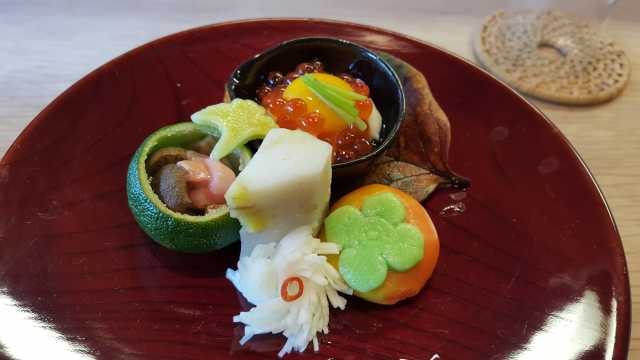
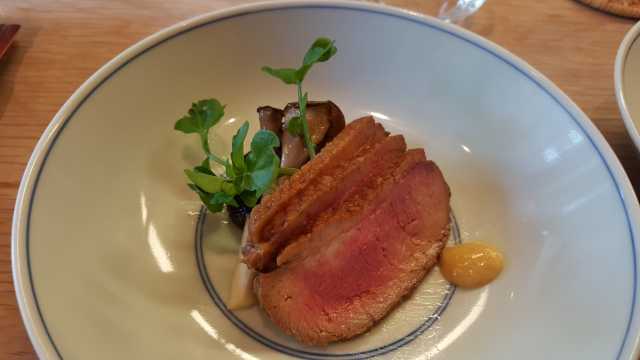
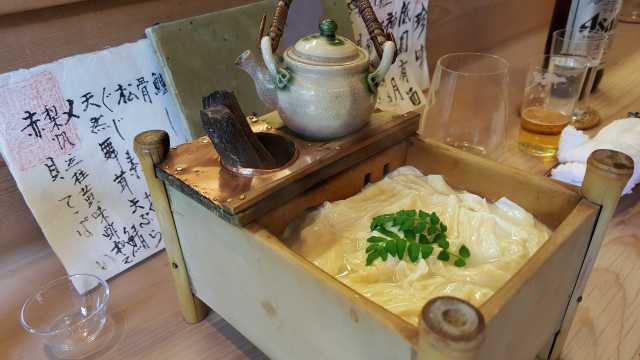
Amazing thread…getting hungry.
Sarah, thx for taking the time to post…just wonderful reading and living vicariously through everything.
I would love to do the Maccarina! Thanks for the evocative notes.
Thanks, guys. Glad you are enjoying them. Japan can be intimidating for Westerners to visit and so many of the best places aren’t in guidebooks or on major tourist trails. I’m hoping these will help a few people get off the main drags, as it were. Places like Maccarina are so special, its truly worth the extra effort to get there.
Having a husband who speaks Japanese does help us get around. A husband who not only speaks Japanese but cooked professionally in Japan is even better. Here is yesterday’s breakfast, including homemade dashi. The bowls in our rental apartment this time are too tiny to serve it properly, but I certainly am not complaining.
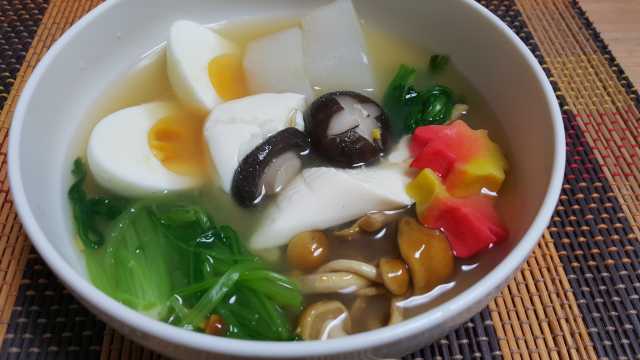
Another note on Kappo Sakamoto, and on Kappo style dining in general - I’d understood that one of the purposes of the kappo style and why it was developed in the first place, in addition to the immediacy of being served what was just that minute prepared for you, is the discussion between chef and diner, specifically about the food. Being able to discuss the quality of the ingredients, the seasonality, the dishes available, the cooking technique so that the chef could build a particular menu for each customer, get to know them, and perhaps add ideas to his own repertoire.
We asked Sakamoto-san about this history and he confirmed, but said mostly that was the case a long time ago. He shook his head and said sadly that now, no one knows ingredients or wants to talk about how the matsutakes have been from the market so far this season. They just want to eat. They come in clutching guidebooks or smart phones and want to be presented with an impressive feast. The notion of building a relationship with the chef and the restaurant around a shared love of food, he said, is fading, even among the Japanese. People no longer meet the experience of dining with a sense of responsibility for participation on their side.
This is an idea my husband and I talk about a lot - the notion of a diner’s responsibility to meet the experience of dining with a presence and responsibility - and we have been part of many heated debates on the subject. Certainly, a restaurant is there to serve the customers, and it would be ridiculous to march into the kitchen at Guy Savoy uninvited and start up a discussion about the quality of the sorrel this year, but we have always felt there could and (to us) should be more than just sitting back and receiving. It’s a complex subject, with a lot of material for discussion, and I am over-simplifying here, to be sure. But it was interesting to hear thoughts similar to ours from a chef’s point of view, especially a chef who practices a style of cooking specifically designed to encourage the communication and connection, and it made us even more eager to return.
Loving this thread so much. That Yuba dish might be my favorite dish of 2015! Thanks for posting!
Did you also have it at Kappo Sakamoto, Robert? I know you guys had a version of the dish (I remember the picture), but since it’s a traditional dish, it could have been many places.
Do you prefer the miso of Kyoto over Hokkaido?
They are different beasts, and I’d choose for different applications. The quality of the beans, water etc. of Hokkaido miso is excellent, but the fermentation tradition is not as developed. I just confirmed this understanding with a little research - seems that, while Hokkaido always produced great beans, they were historically exported to the south because the climate up north was too cold for the fermentation to take place over the required 16-18 months. To my/our taste, Kyoto miso is more pure and refined. Obviously, that is a generalization, both because of specific applications and because of specific types of miso. For instance, saikyo miso is a whole category in and of itself. If forced to choose Kyoto versus Hokkaido, it would be Kyoto - as evidenced by the 4 packets we bought yesterday at Nishiki and will be carrying home with us.
Thanks Sarah, I just experienced some pretty great Edomae-sushi and the Zuke method.
We spent three weeks in Japan but didn’t observe this style frequently, do you have any observations on different styles.
(Our most extravagant meals were in Ryoken rather than restaurants).
Russell - I haven’t had much experience with Edomae style. I know the basics - that it was developed for monks along the walking routes, and was highly vinegared for preservation purposes - but it is not a favorite, so we don’t seek it out. The style is prevalent still, or at least more present, in Kyoto. My impression is that it’s generally considered old fashioned, but in Japan, that means there are a lot of people who are intensely proud of it. It’s all about competing to see who is more Japanese… (said with love.) Since there is no local fish market in Kyoto, though, and plenty of other culinary delights, we don’t eat much sushi in Kyoto.
fascinating. another beast as well, but I do love hatcho miso, especially with root vegetables like turnips and radishes.
Tempura and Champagne for Lunch
I’ve found that the Japanese do not like to make recommendations. They are afraid of getting it wrong, or sending you somewhere you will not like. When asked for a good restaurant in the area, they will ask a lot of questions: what do you want to eat? What kind of food do you like? And then they will send you to a train station or other food court, where there a number of options available, or to a restaurant with a buffet. In bars (with notable and wonderful exceptions), bar tenders get very uncomfortable if you ask them to create a cocktail, and suggest you perhaps would just like to have an Old Fashioned. So we were delighted when Sakamoto-san happily provided us with a list of some of his favorite places to eat in Kyoto. I suspect we’ll hit all of them eventually, on future visits. This time, we decided to try Tenyu, a high-end tempura restaurant quite close to our apartment.
We stopped by around 9:30 AM to see if they could take us for lunch. The path leading up to the restaurant entrance, set back from the street like so many places in Kyoto, was particularly beautiful and inviting. It is typical at places of this design to wet down the paving stones leading to the door regularly during service times, to look as if it has just rained. Because they were not not serving yet, the stones were not wet, but we knew they would be later! The entrance to the restaurant itself was also serene and impactful, in a style juxtaposing traditional materials like bamboo and wara-juraku (Japanese stucco) with concrete. I am particularly fond of this contrast – it’s formed the basis for our house design! – so I was even more excited when Jonathan determined they could accommodate us for lunch at the counter, which is always our preference.
Over the years, I’ve visited a number of very good tempura restaurants all over Japan, and I’ve come to love the way this method of frying brings out flavors in fish and vegetables, rather than obscuring them with heavy breading and oil. A tempura master, I’ve been told, maintains strict temperatures for the different items he fries, and carefully mixes the batter just a little to keep it light. The results can be sensational, reaching their pinnacle (in my experience so far) as Kyuboshi 7 Chome in Tokyo, where we ate with and at the suggestion of good friends earlier this year. Each piece was different and delicious and bordering on sheer perfection. I wish tempura of anywhere near that quality could be found in the US, but I don’t believe it can. My guess is that the interest in very high-end tempura would not be there. Americans wouldn’t think of it as something worthy of the attention, ritual and respect – and thus the price point – enough to sustain such a business, I’m guessing. If anyone knows of a place, please chime in! I know one opened recently in NY trying to be that, but reports have been mixed so far.
The upstairs dining space at Tenyu, where the counter is located, is tiny and beautiful. There are 12 seats in a U-shape around the cooking area. One wall is almost all windows, with and without shoji screens, looking out at the tops of the trees and bamboo growing in the first floor courtyard garden. The bar is smooth Hinoki cedar (or some variant), velvety to the touch. Chef prepared our places with the traditional set up – a small plate on the upper level of the counter, lined with paper, where he would deposit each piece as he prepared it, then a tray with sauces, salt and a small plate to which the diner transfers each piece before eating it. It’s sometimes difficult to determine what a restaurant in Japan has for wine – even if they have an English menu, they rarely have an English wine/sake list – and choosing what to drink often comes down to being shown every bottle option. Tenyu’s list, however, had a few wines listed in Romaji, including Delamotte champagne for a reasonable price. With jokes about how well champagne goes with fried stuff (age-mono) which made the waiter laugh, we ordered a bottle to accompany our lunch.
There were about 10 or 11 pieces of tempura, including shrimp (heads and bodies separately), kisu (small fish) wrapped in shiso, matsutake mushrooms, sweet potato, uni in nori, a few kinds of nama fu (wheat gluten, also known as seitan in the US, but SO much better, especially the nama, or fresh, variety), yuba, green beans, and whole, tiny ayu (sweetfish). The quality of the ingredients was very high, and the skill of the chef strong. Everything was a joy to eat. The earlier pieces were better, as the oil got a bit too hot over the course of the meal and the later pieces browned a bit, which should not have happened at this level. When the counter became completely full, it seemed chef and his assistant might have become a little overwhelmed. Hard to tell. Don’t get me wrong, the darker pieces were still delicious, just not up to the ideals of true tempura mastery. The meal concluded with another traditional dish I quite like, ocha-zuke, or rice and pieces of fish (in this case tempura) with green tea poured over to make a sort of soup. Chef explained there is a more specific name for it (we’ve also forgotten that) when it’s done specifically with tempura, but ocha-zuke is the category.
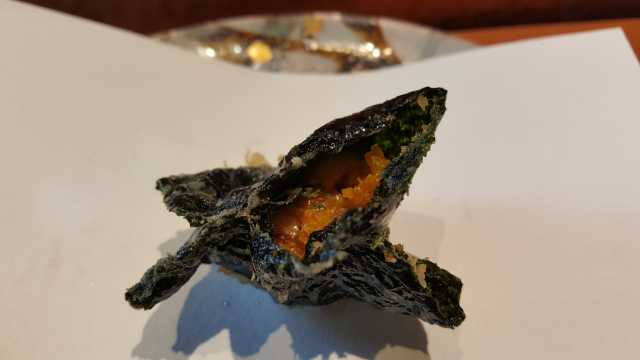
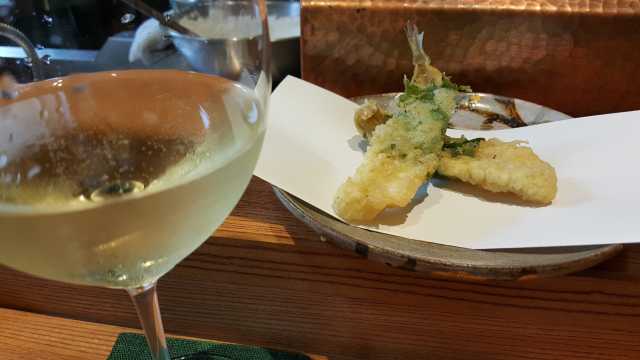
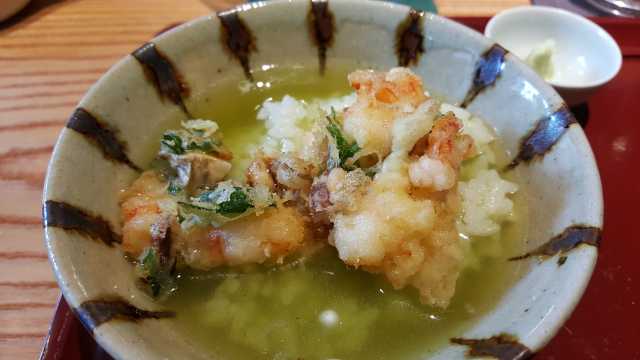
Unfortunately, there was a blemish on the entire experience that happens all-too-frequently when traveling abroad: the couple to our right side was of the Loud American variety, their voices and raucous laughter echoing harshly, and their (to me) intentionally dumb questions annoying everyone in the room who could speak English. A young Japanese couple had brought them there – the two couples met on a dive trip to the Maldives the previous year (we couldn’t help but overhear) – and I think was quickly coming to regret the choice. They managed to alienate chef as well, by allowing pieces of tempura to accumulate on their small, paper-lined plates. In restaurants like this, each piece of tempura is presented separately, and you are supposed to eat each one immediately, while it is hot and perfect. The Japanese in general are VERY concerned about your food getting cold, and will urge you eat soup and other scalding dishes right away. Chef kept glancing at the growing pile of pieces on the American guy’s plate, ignored while he gabbed endlessly to his wife and the other couple. I couldn’t take it finally, and gently suggested he should eat his food while it’s hot, upon which he made it even worse by dunking each piece in ponzu to the point of saturation. I think I caught a flash of pain and irritation cross chef’s face, as a little bit of him died inside. Despite the noisy Americans, lunch at Tenyu was a wonderful experience, one I’d repeat happily. While it did not equal the level of Kyuboshi or a few others I’ve experienced, it cost a tiny fraction of the price, and the serene setting more than made up for small imperfections.
maybe they were canadian ;p
A Kyoto Crawl
An interesting thing about many restaurants in Japan, like in Taipei a number of other Asian locales, is that they tend to specialize to the exclusion of all other dishes. A restaurant is a tempura joint, or yakitori, or sukiyaki, or sushi. It’s true of other types of businesses as well, with stores selling only brooms, or umbrellas, or pickles. While this focus means that they tend to do what they quite well, one sometimes wants a variety of dishes for dinner. Enter the izakaya…
Roughly translated, izakaya means “to stay and have sake.” These places grew out of sake shops where you could drink instead of bringing your bottle home. Now they are informal drinking establishments that serve a variety of small dishes to accompany drinks, and are frequented by nearly every professional on his or her way home from work. They also tend to stay open very late to accommodate, making them sometimes the only option for food, other than convenience stores, open after about 9. An izakaya is a little like the Japanese equivalent of a tapas bar, though the culture is different. The menus are long and varied, though they almost always include some sashimi, some skewers or other grilled meats, and some fried dishes. The places down the side streets with red lanterns out front are often isakaya (the lanterns indicate it’s a drinking establishment, but most bars serve some food as well.) There are hundreds, if not thousands, of them in big cities. I love isakaya dining. The only difficult part is that the tiny ones almost never have an English menu, so it’s more difficult to order there. Fortunately, either staff or other customers are generally happy to help out the foreigners who wandered in, speaking Japanese but unable to read. ![]() It helps that we eat everything. The food, even at hole-in-wall places, tends to be surprisingly good, and each place does something special or different. The proprietors, in my experience, are often delightfully full of pride for what they serve, and will go to the trouble of using interesting and beautiful ceramics for even the most humble of dishes.
It helps that we eat everything. The food, even at hole-in-wall places, tends to be surprisingly good, and each place does something special or different. The proprietors, in my experience, are often delightfully full of pride for what they serve, and will go to the trouble of using interesting and beautiful ceramics for even the most humble of dishes.
Jonathan and I have a few favorite isakayas in Kyoto, one in particular called Hassunba, that we make a point of visiting every time. The food at Hassunba is a cut above. Ikeda-san, the sole cook and owner, has been serving delicious and unusual food down an alley off of Pontocho-dori for (I think) about 20 years now. He got a write up in the NYT way back in the early 2000’s, but other than that, I haven’t ever seen his place mentioned in any guidebook in the West. I’m perfectly ok with this, as it means we can almost always get in for a meal. Ikeda-san knows us well by now (Jonathan has been going there for about 15 years!), and always gives us our favorite dishes, such as yuba mille feuille with miyoga and shiso, and red snapper shabu shabu. This year, we saw he had an English menu for the first time! But since we’ve never looked at one before, we just let him cook for us as usual. He also pours interesting and delicious sake, taking charge of those choices as well, until we say stop.
We also like to wander around and find new places, and we seem to both have good noses for sniffing out really interesting and friendly establishments. It’s not always easy to tell what’s on the other side of the sliding wooden doors, or behind the split curtains in the doorway, particularly in Kyoto, where there are tons of private clubs and bars. We generally don’t try to enter anywhere we can’t see a bit through the window. This trip, we happened upon two or three cute, fun isakayas, despite its being a holiday and a number of places being closed. One in particular, a place called Ryo Sen, was shockingly good for both food and sake. We would happily have stayed the evening if we hadn’t planned for a crawl. A stewed beef dish, in a richly complex, but not heavy sauce with sesame, greens and ginger was superb. As we left, the owner came running out after us, wanting to talk, apologizing that he’d been busy when we came in. He wanted to know where we were from, how we found him, what we thought of the food, how did we know so much about sake – and just how did we end up in this part of town? When we said we like to wander and explore, he made the classic Japanese “haaaaaaayyyyy” sound (useful even for foreigners, as it fits so many circumstances) and slowly clapped his hands. Then presented us with his card.
Here are some pictures of our isakaya crawl in Kyoto.
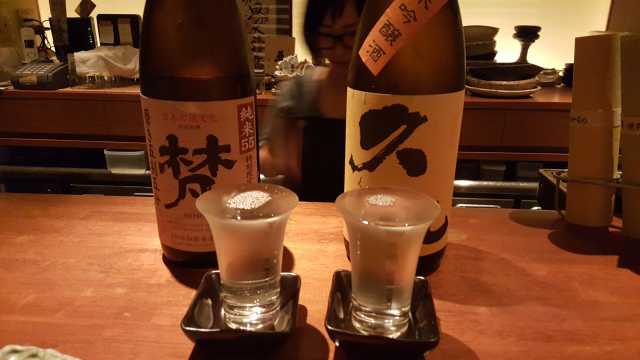
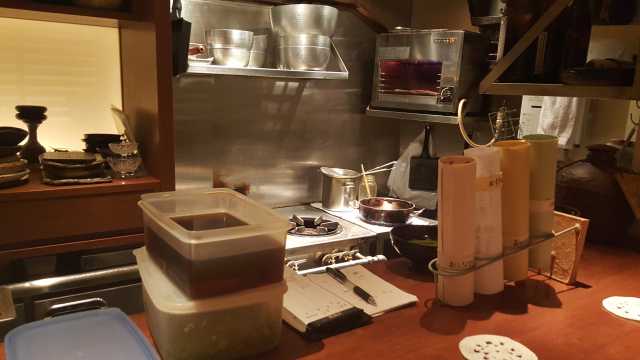
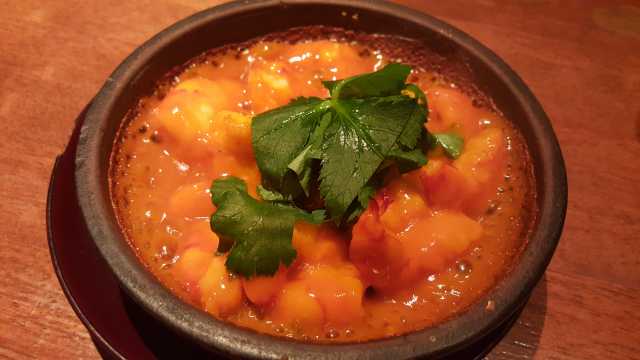
Some more photos.
